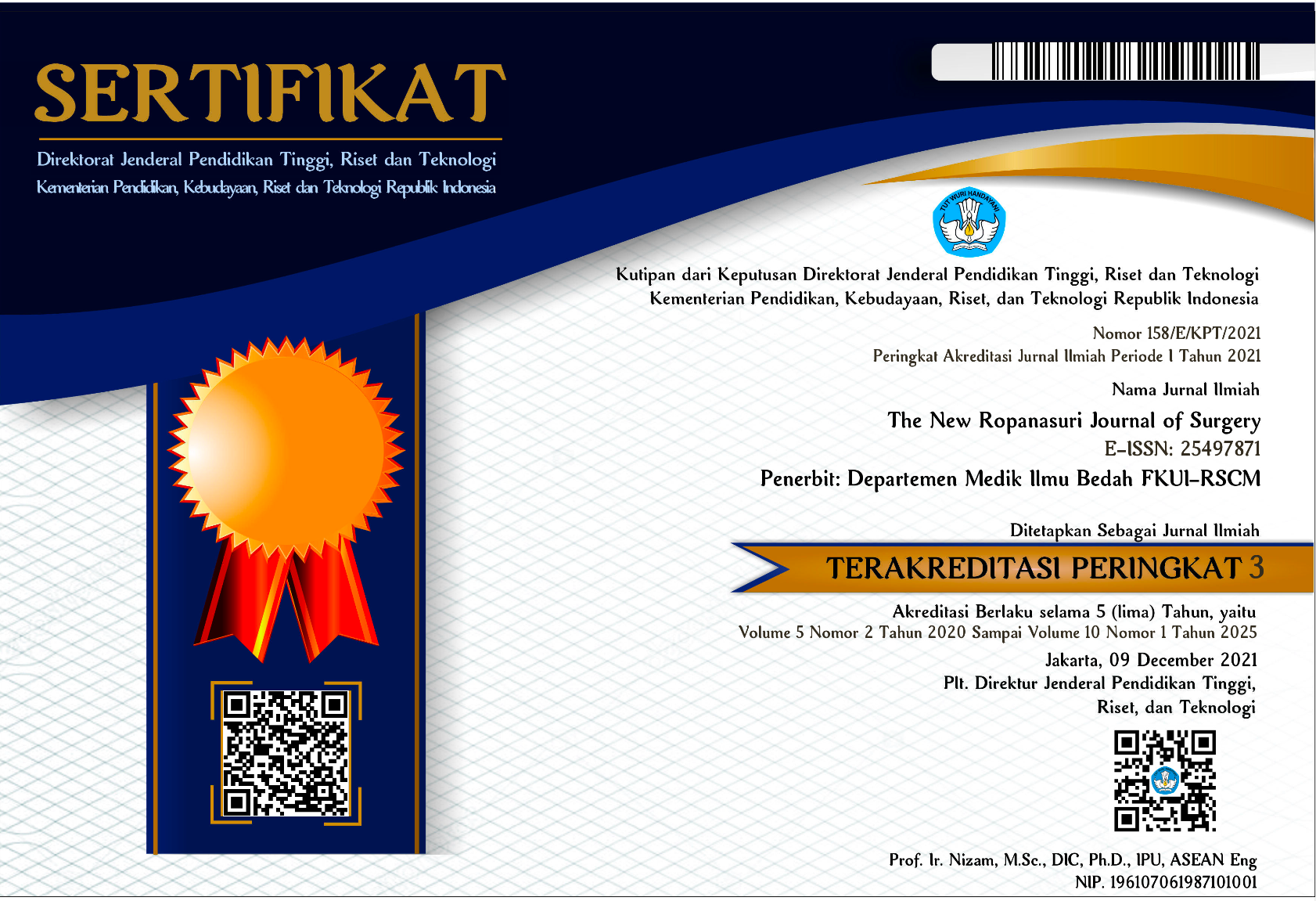Abstract
Introduction. The heterogeneity of manifestations in intestinal tuberculosis requires different approach. One step or two steps surgical procedure referred to the method of choice to reduce morbidity and mortality. The review aimed to find out the indication to perform primary anastomosis in intestinal tuberculosis. Method. A systematic review was conducted in accordance with PRISMA guideline in June 2018. Literature searches were performed through online databases sites (PubMed, EBSCO, and Ovid) using keywords “intestinal tuberculosis” AND “surgery” AND “anastomosis”. Intestinal pathology, surgical procedures, anastomosis leaks, enterocutaneous fistula, and mortality were the variables of outcome have been analyzed. Results. Twelve articles of cohort studies were critically appraised and analyzed. The selection of the surgical procedure depends on condition, extent disease, nutritional status, and surgeon’s preferences. Resection and primary anastomosis are safe in an obstructive lesion with low incidence of enterocutaneous fistula and anastomosis leaks. The two steps procedure is advisable in intra–abdominal sepsis. Conclusion. In subjects without intra–abdominal sepsis, intestinal resection with primary anastomosis as a definitive procedure might be considered in obstructive lesions and in perforated lesions, with low risk to have anastomosis leaks and enterocutaneous fistulas. In contrast, in septic subjects, two steps procedure is advisable.
Recommended Citation
Putranto, Agi S. and Muchtar, Stefanny
(2018)
"Anastomosis in Intestinal Tuberculosis: A Systematic Review,"
The New Ropanasuri Journal of Surgery: Vol. 3:
No.
2, Article 6.
DOI: 10.7454/nrjs.v3i2.53
Available at:
https://scholarhub.ui.ac.id/nrjs/vol3/iss2/6













